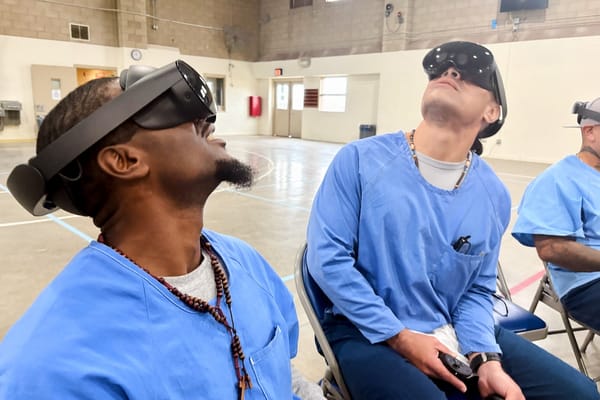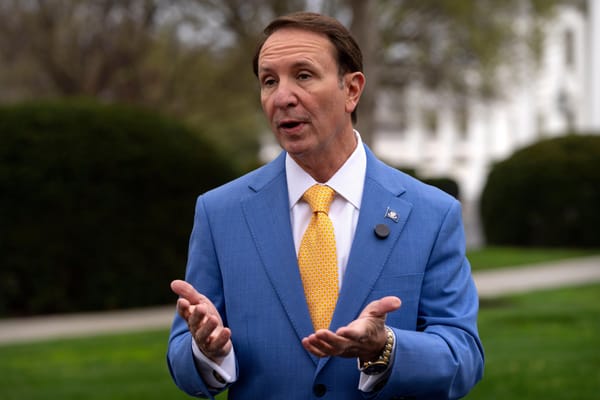Closing the Digital Divide Can Power a Rural Resurgence
High-speed broadband unlocks business growth and job creation, attracting people to come and put down roots.
Calum Cameron

Starting in 2020, rural America saw a growth in population, bucking a decades long trend of people leaving for opportunities in urban centers. This could be a temporary Covid blip. But what if, instead, it marks the beginning of an era where remote work possibilities and digitally-connected businesses pave the way for a rural resurgence?
That’s the hope of Harlan County in Eastern Kentucky which, having lost two-thirds of its people since its 20th century peak, is working to attract and retain more people to grow its economy, diversify commerce, and keep schools, stores, and public services going.
A new study suggests focusing on digital opportunities is crucial. FarrPoint estimates that improved broadband internet connectivity could generate over $70 million in direct economic benefits for the county over the next 15 years. More than $56 million of these gains stem from stabilizing the population, with improved connectivity expected to attract or retain over 1,000 residents.
The message is clear: expanding high-speed connectivity will be critical to the growth and prosperity of rural communities like Harlan County.
People demand broadband
Ask anyone what it takes to stay, move, or invest in a rural area, and high-speed broadband consistently ranks alongside housing, healthcare, and jobs. 66% of Americans say they’d consider rural life if remote work were an option.
The appeal is clear: beautiful landscapes, affordable living, rich culture, and close-knit communities. These were among the things that first gave Pedro Morgado, a software developer from Florida, the idea of moving to Appalachia.
After finding what would be his dream home in Harlan County, Pedro learned the area had no cell phone service and almost pulled out. As a remote worker, connectivity is a must-have. Thankfully, the house had recently been connected to high-speed fiber and he was able to go ahead—bringing skills, dollars, and other contributions to the county.
The economic case is clear
Pedro is a living example of why Shaping Our Appalachian Region (SOAR) has made promoting broadband adoption a core pillar of its work to boost the population of Eastern Kentucky. And why we partnered with Connect Humanity’s Appalachia Digital Accelerator to lay the groundwork for next-generation broadband in some of our region’s least connected communities.
The expansion of high-speed broadband unlocks business growth and job creation, attracting people to come and put down roots. This drives municipal revenues, improves public services, and creates a more dynamic community—attracting yet more people. It’s a virtuous cycle.
New data from the Center on Rural Innovation illustrates what this means for local economies. Rural counties with high broadband adoption have 213% higher business growth rates and 44% higher GDP growth rates compared with less connected counties. Per capita income is 18% higher in these counties.
The kicker: these benefits flow primarily to existing residents, not only to new arrivals. Broadband isn’t just economic fertilizer, it’s the key to letting people live where they love.
What’s the hold up?
Why isn’t a resurgence more rapidly revitalizing our communities? Because the digital divide remains stubbornly wide.
One in four rural Americans still lack broadband access at home. Broadband adoption in Harlan County lags 12 percentage points behind the US average—even as one of Eastern Kentucky’s better-connected areas. In the mountainous areas we serve in Appalachia, cell service too is often spotty or non-existent.
Even where connectivity is available, the reliability of service is a huge problem due to aging infrastructure and topographical challenges. You can’t run a business on broadband that cuts out or slows down every few hours.
High costs also keep people offline. The range of services can be limited and many rural Americans have a choice of paying north of $100/month or nothing at all. If you’re paying that much for broadband, it better be fast and reliable. It often isn’t. The lapse of the Affordable Connectivity Program earlier this year didn’t help, ending discounts for low-income families, resulting in millions of subscribers losing service.
It’s time to end the rural-urban digital divide
Rural America can’t compete in a 21st century world with 20th century technology. But just as rural electrification spurred new economies in the mid-1990s, ubiquitous, affordable broadband can do the same today.
The good news is there’s about to be more public funding to expand rural broadband than ever before. The bad news: it’s not enough. Programs like the Rural Digital Opportunity Fund (RDOF) have fallen short, awarding just $6 billion of a promised $20 billion. And while the $42 billion Broadband Equity Access and Deployment initiative—the largest broadband program in US history—will go further, it is very likely that many rural communities will still be without reliable, affordable internet once the money is spent.
But all this momentum wants to be harnessed. Rather than an excuse to stand on the sidelines, this federal funding is a signal and an invitation to foundations, regional development bodies, and impact funders who care about rural America to step up and use their dollars to get broadband to every corner of every county in the country.
We really can get this done if more impact capital and local investment comes along. For a start, funders can help communities with the match dollars they need to qualify for BEAD funds. Beyond that, there are many communities that aren’t eligible for BEAD, but still need grants and low-cost financing to build broadband networks fit for the future.
We’re grateful to leaders like Congressman Hal Rogers, Governor Andy Beshear and the Kentucky Office of Broadband Development, and the Appalachian Regional Commission (ARC) for being champions of broadband development. If rural community leaders keep focused on broadband and get the support and funding they need, together we can power a rural revival.
Calum Cameron is Communications Manager at Connect Humanity where he champions the organization’s mission to close the digital divide by investing in community-focused broadband.
Colby Hall is the executive director of the Shaping Our Appalachian Region (SOAR), which focuses on broadband and connectivity, remote work, healthy communities, entrepreneurship and regional prosperity. This Expert Opinion is exclusive to Broadband Breakfast.
Broadband Breakfast accepts commentary from informed observers of the broadband scene. Please send pieces to commentary@breakfast.media. The views expressed in Expert Opinion pieces do not necessarily reflect the views of Broadband Breakfast and Breakfast Media LLC.











Member discussion